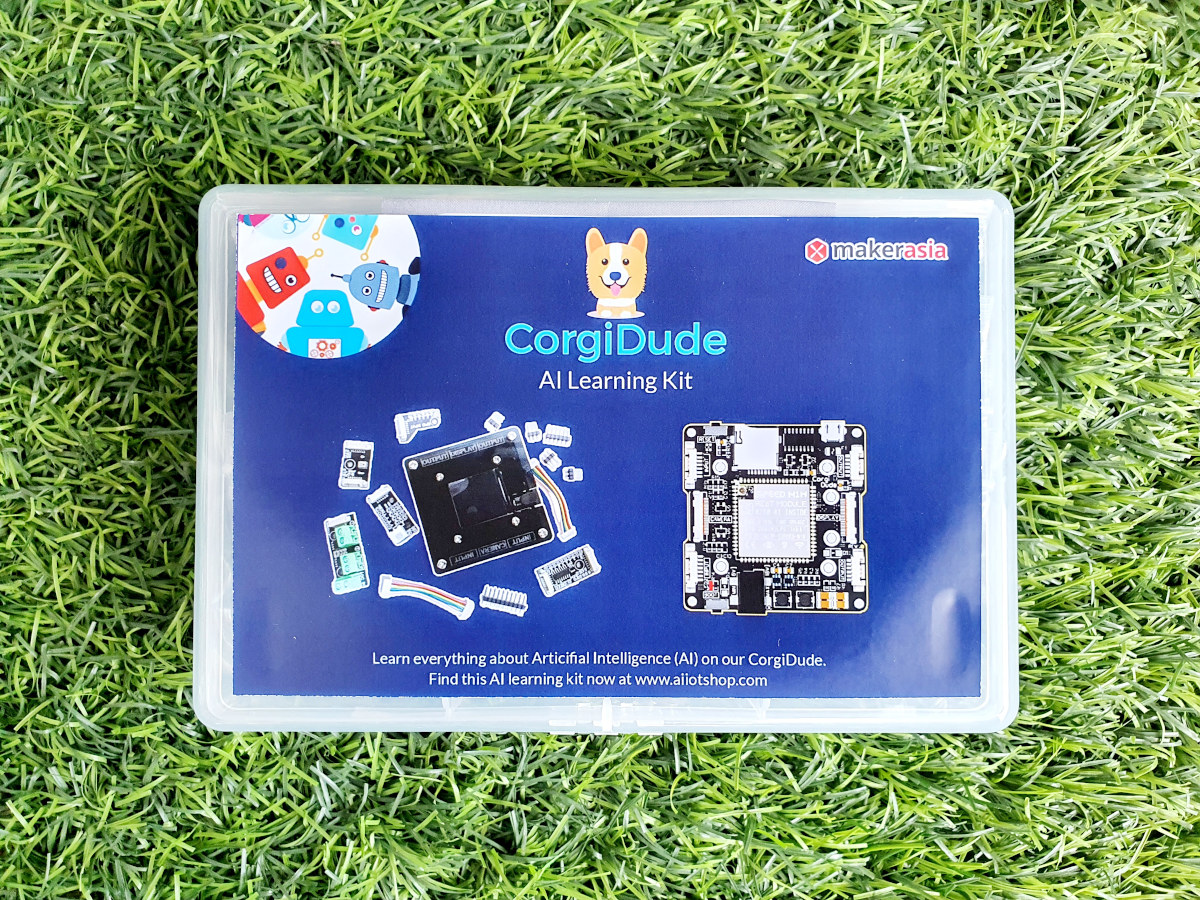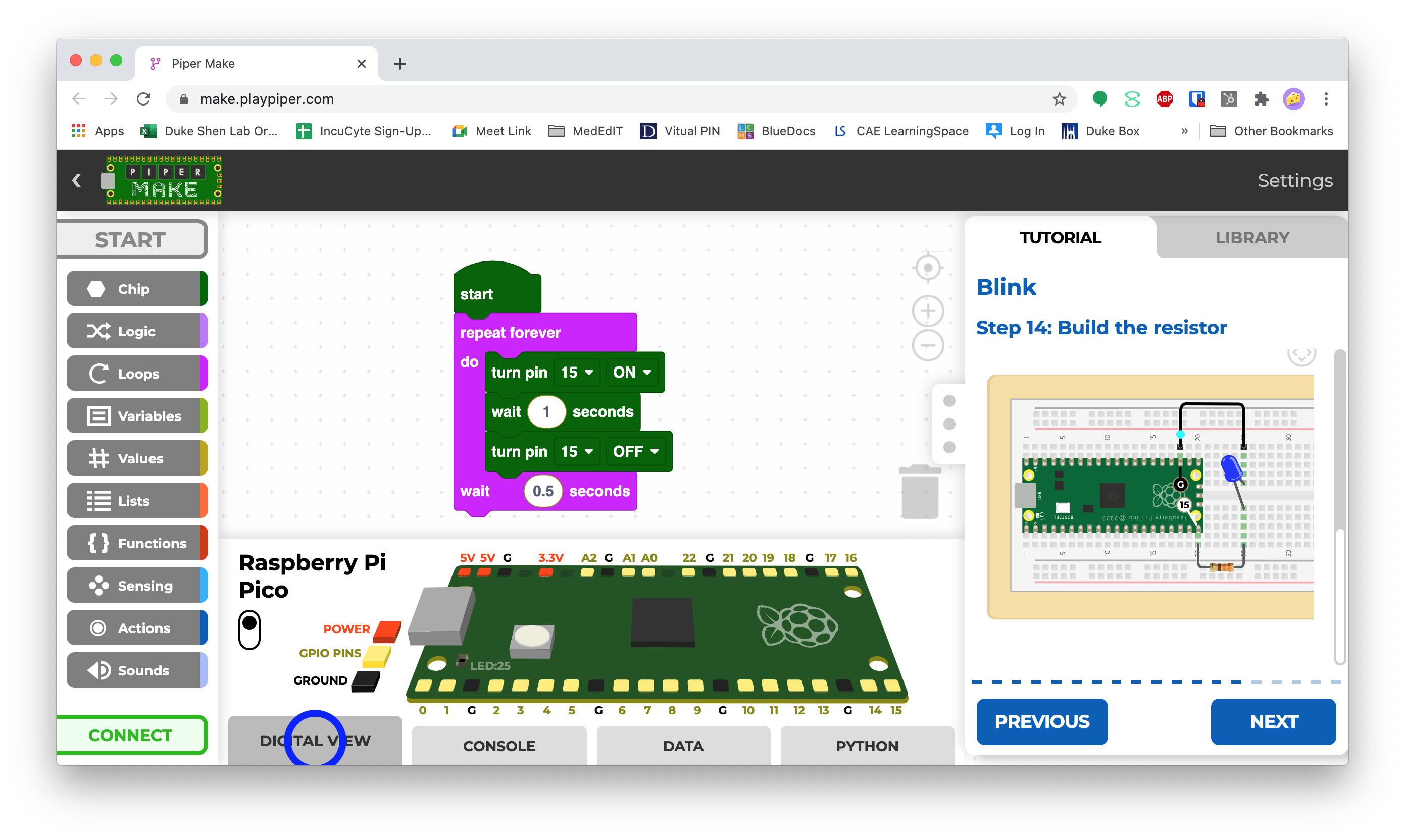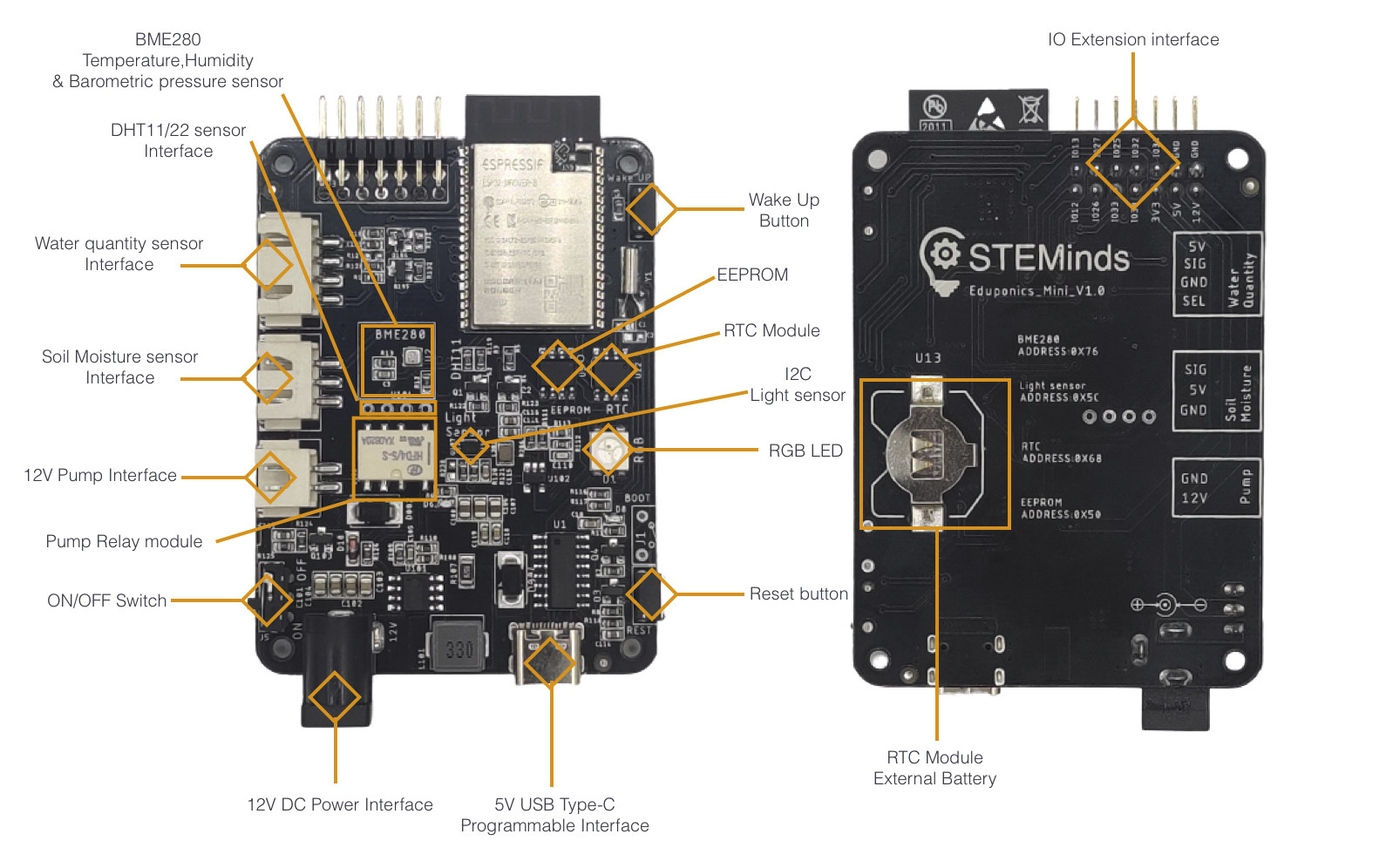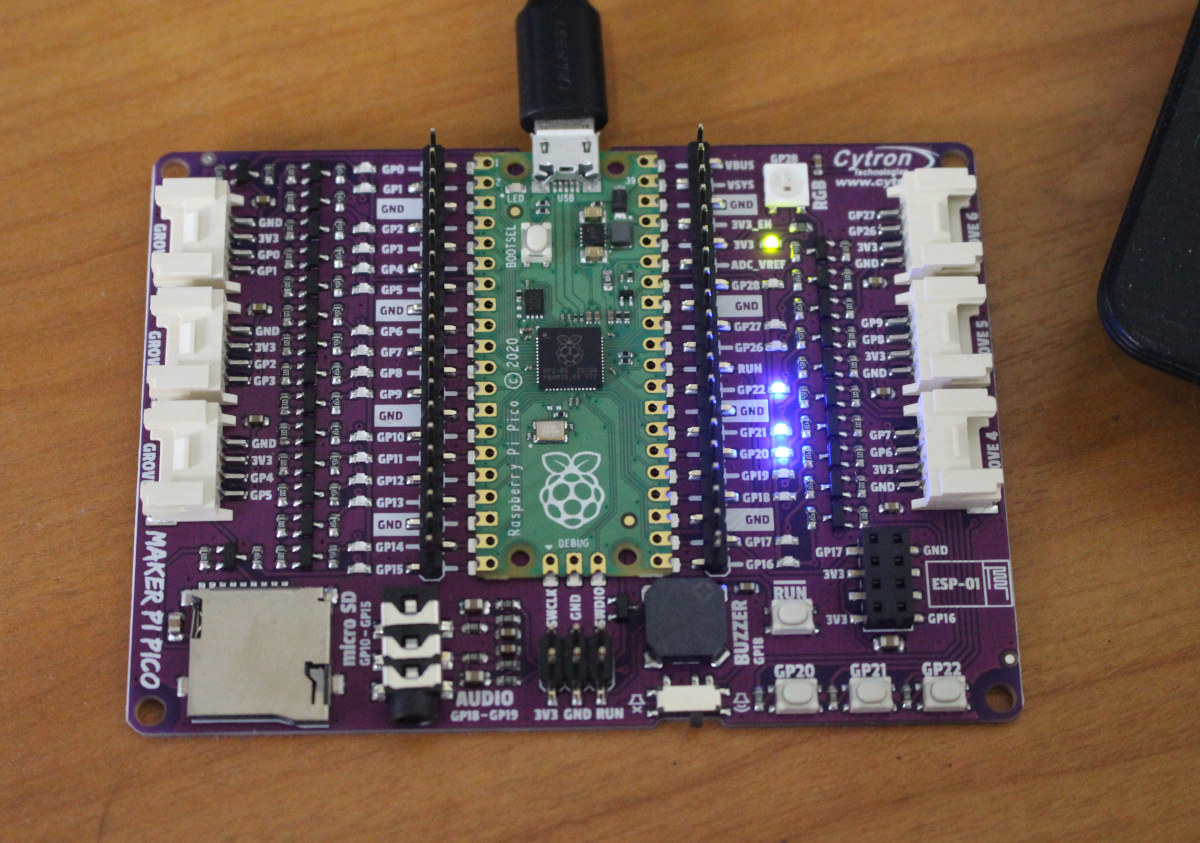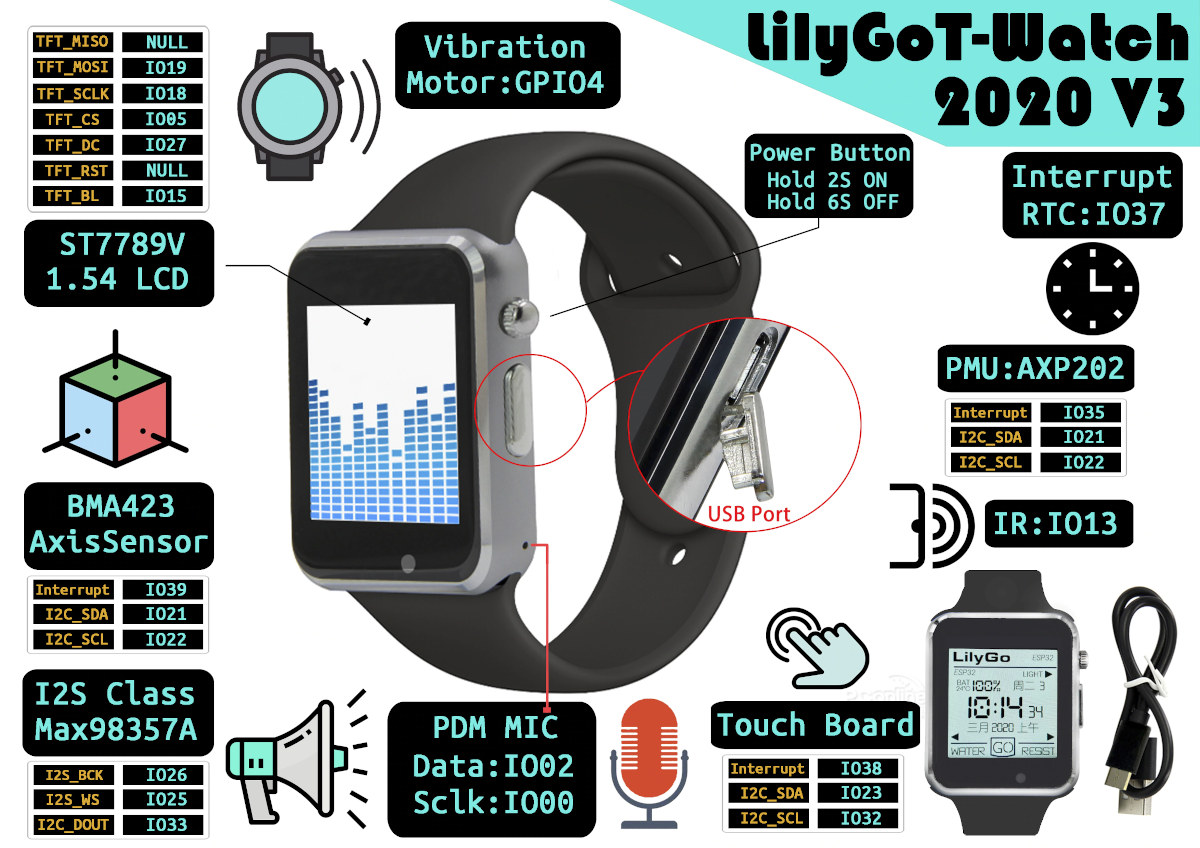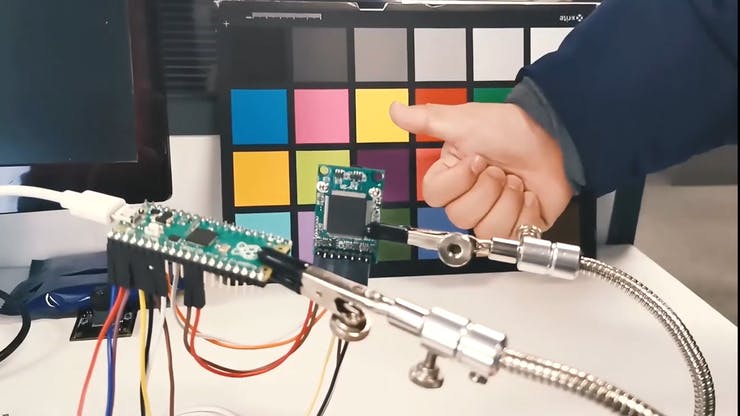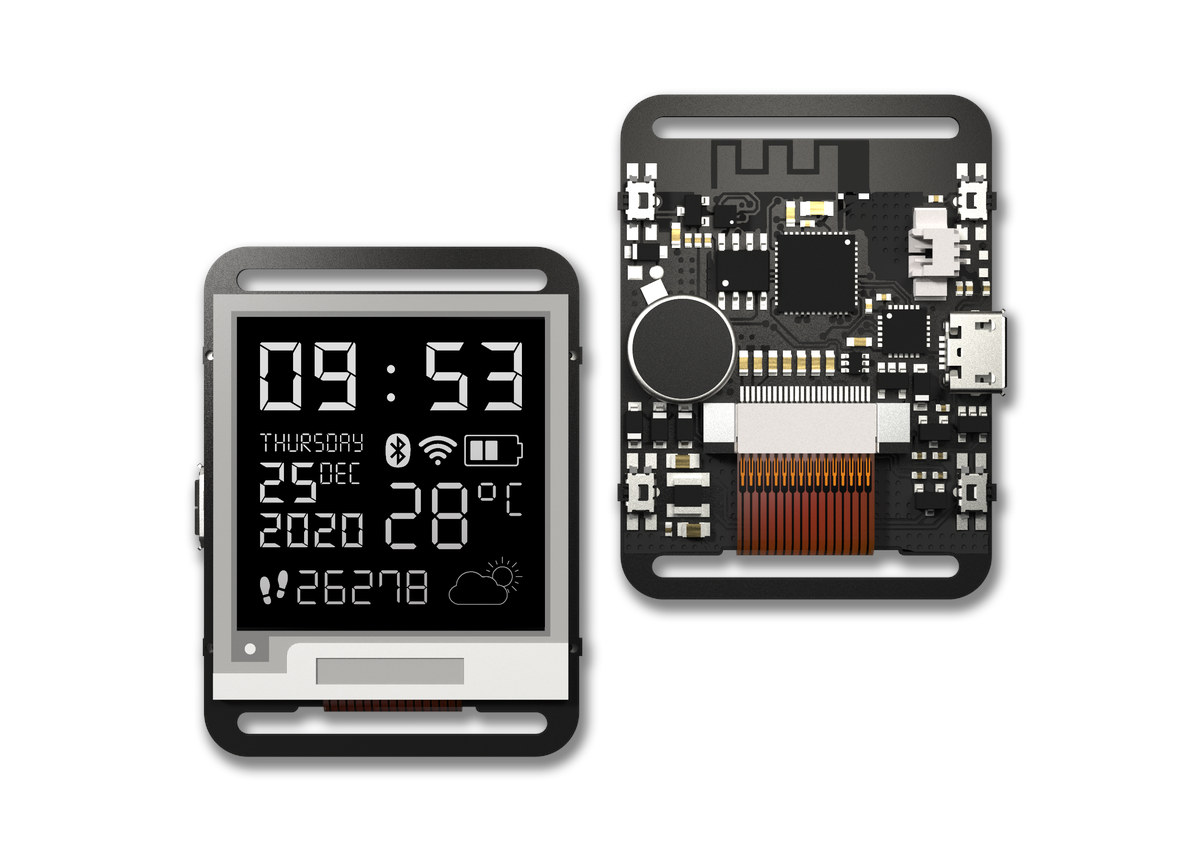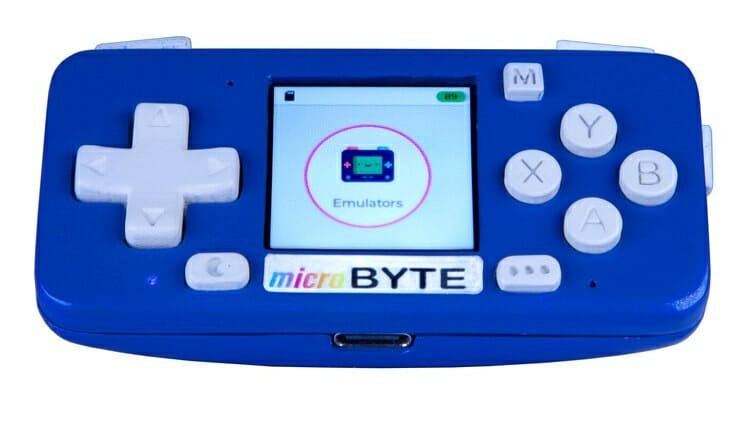There’s a relatively small but active maker community in Thailand, and we’ve covered or even reviewed some made in Thailand boards including ESP8266 and ESP32 boards, a 3G Raspberry Pi HAT, and KidBright education platform among others. MakerAsia has developed CorgiDude, a board based on the version of Sipeed M1 RISC-V AI module with built-in WiFi, and part as a kit with a camera and a display used to teach machine learning and artificial intelligence with MicroPython or C/C++ programming. CorgiDude board specifications: AI Wireless Module – Sipeed M1W Module with Kendryte K210 dual-core 64-bit RISC-V RV64IMAFDC CPU @ 400Mhz with FPU, various AI accelerators (KPU, FFT accelerator…), 8MiB on-chip SRAM Espressif ESP8285 single-core 2.4 GHz WiFi 4 SoC plus IPEX antenna connector Storage – MicroSD card slot Camera I/F for 2MP OV2640 sensor up to 1280 × 1024 (SXGA) @ 30 fosm SVGA @ 30 fps, or CIF @ […]
Piper Make: First Drag-and-Drop Coding Platform for Raspberry Pi Pico
In 2019 we saw Piper’s Computer Kit 2, which was a DIY Raspberry Pi 3 Computer for educational purposes. The kit was for kids to educate them on building their own computers and the basics of programming in electronics. This year the company has come up with another educational platform. Meet Piper Make. The newly launched Raspberry Pi Pico is capable of a wide range of applications but directly working on the development board for exploring these applications could be difficult for beginners. Additionally, prototyping a project or an application before implementing it is an ideal way for starting. Hence. Piper has launched its first drag-and-drop coding platform for the Raspberry Pi Pico which allows hands-on prototyping for the users. Piper Make platform has an interface that supports Chromebooks and other computers, thus making it flexible for users. It is free for users to explore hands-on with the Raspberry Pi […]
Eduponics Mini is an ESP32-powered Smart Agriculture kit (crowdfunding)
One sector of the economy that should benefit the most from the Internet of Things is the agricultural sector, as environmental sensors are needed to optimize yields and also decrease costs with lower electricity and water usage. STEMinds Eduponics Mini Smart Agriculture kit is designed for this purpose. At the heart of the kit is an ESP32 board equipped with light, temperature, humidity, and barometric sensors, as well as interfaces to connect an external pump, a soil moisture sensor, a water quality sensor, and more environmental sensors. Eduponics Mini board specifications: Wireless module – ESP32-WROVER-B module with ESP32 Wi-Fi and Bluetooth SoC, 4MB QSPI flash, 8MB SPRAM, PCB antenna Built-in sensors BH1750 I2C light sensor BME280 I2C temperature, humidity, and barometric sensor Expansion 2-pin connector for 12V pump with built-in relay module 3-pin connector for soil moisture sensor or any other analog or digital device 4-pin connector for water quantity […]
Maker Pi Pico STEM board mini review with CircuitPython
In my early list of third-party Raspberry Pi RP2040 boards, I shortly mentioned Cytron Maker Pi Pico baseboard for Raspberry Pi Pico that exposes all pins via female headers, includes LEDs for all GPIOs pin, six Grove connectors, three user push-buttons, one RGB LED, a piezo buzzer, an audio jack, a MicroSD card, and an ESP-01 socket to add WiFi connectivity. The beta version sold for $5, and at the time I missed that included Raspberry Pi Pico board as well, so basically you got a free baseboard. The Malaysian company has now sent me a review sample to play around with, so let’s have a closer at the hardware and code samples for the board. Maker Pi Pico Unboxing and Specifications I received the board in Cytron package together with a pinout diagram for Raspberry Pi Pico, and we can see the latter is already soldered to Maker Pi […]
TTGO T-Watch-2020 V3 ESP32 watch adds microphone for voice control
Lilygo TTGO T-Watch-2020 is a thin, ESP32 smartwatch programmable with Arduino that was introduced last year. The WiFi and Bluetooth-connected watch is equipped with a 1.54-inch LCD capacitive touch screen, a Class-D amplifier, buzzer, accelerometer, RTC, and a battery. The watch is one of the top-selling devices on Lilygo’s Aliexpress store, and they must have had requirements for voice control, so the company has now launched TTGO T-Watch-2020 V3 based on the same design but adding a PDM microphone. As far as I can TTGO T-Watch-2020 V3 specifications are the same as last year’s model, except for the microphone: SoC – Espressif ESP32 dual-core wireless processor with 520KB SRAM System Memory – 8MB PSRAM Storage – 16MB QSPI flash Display – 1.54-inch LCD capacitive touch screen Audio – Max98357 Class-D amplifier, buzzer/speaker, PDM microphone Connectivity – 802.11b/g/n WiFi 4 and Bluetooth 4.x/5.1 via ESP32 Sensors – BMA423 three-axis accelerometer with […]
Person Detection on Raspberry Pi Pico with ArduCAM and TensorFlow Lite
ArduCAM is popular for camera-based applications with various boards ranging from Arduino to Raspberry Pi. We also saw the company’s tiny coin-sized Raspberry Pi compatible module 5 years ago. Now, it also supports the newly launched Raspberry Pi Pico for real-time video applications. Raspberry Pi Pico is compatible with the ArduCAM Mini 2MP Plus camera featuring an OV2640 2MP CMOS image sensor that supports automatic image control functions including Automatic Exposure Control (AEC) and Automatic Gain Control(AGC). The camera also comes with an onboard JPEG encoder for image compression. The company has provided a Github repository with two demo applications: a video streaming application and an example for basic person detection with the probability percentage of detection. There is also an option of directly using the UF2 files for flashing with Raspberry Pi Pico, if you don’t want to build the demo from the source code yourself. The application runs […]
Watchy Pebble-like Smartwatch with E-paper display, ESP32 processor launched on Crowd Supply
Pebble smartwatch was introduced in 2012 on Kickstarter. The Bluetooth smartwatch came with an E-Paper display, would connect to your Android smartphone or iPhone to receive notifications or other info, and the company also released an SDK for further customization. It was quite popular at the time having sold over one million units, the Pebble Time followed in 2015 with a color display, as well as other models. But despite selling millions of watches, the company folded in 2016, and the Pebble was discontinued after the intellectual property was purchased by Fitbit. Watchy is a new smartwatch that reminds me of the original pebble. It is based on ESP32 WiFi & Bluetooth SoC, equipped with a 1.54-inch E-Paper display with 200×200 resolution, and the usual accelerometer for activity tracking and gesture detection. Watchy key features and specifications: SIP – Espressif Systems ESP32-PICO-D4 system-in-package with ESP32 dual-core processor with Bluetooth LE […]
microByte ESP32 portable game console comes with a 1.3-inch display (Crowdfunding)
We’ve previously seen programmable, portable game consoles powered by Espressif Systems ESP32 processor with the likes of ODROID-GO or WiFiBoy32 both equipped with a 2.4-inch display, and design to play retro games or create IoT projects with a small display thanks to I/O headers. But if for some reason, you’d like an even more compact ESP32 portable game console based on the WiFi & Bluetooth SoC, Byte-Mix Labs microByte may be what you are looking for thanks to a tiny 1.3-inch square display. microByte specifications: Wireless module – ESP32-WROVER-E module with ESP32 dual-core processor @ 240 MHz, 8 MB PSRAM, 16 MB flash, and integrated Wi-Fi and Bluetooth antenna Storage – MIcroSD card slot Display – 1.3-inch ST7789 IPS Screen with 240 x 240 pixel resolution, 60 Hz max refresh frequency Audio – On-board speaker powered by a MAX98357AETE+T I2S amplifier Controls – 13x onboard buttons with 8x Inductive direction […]


